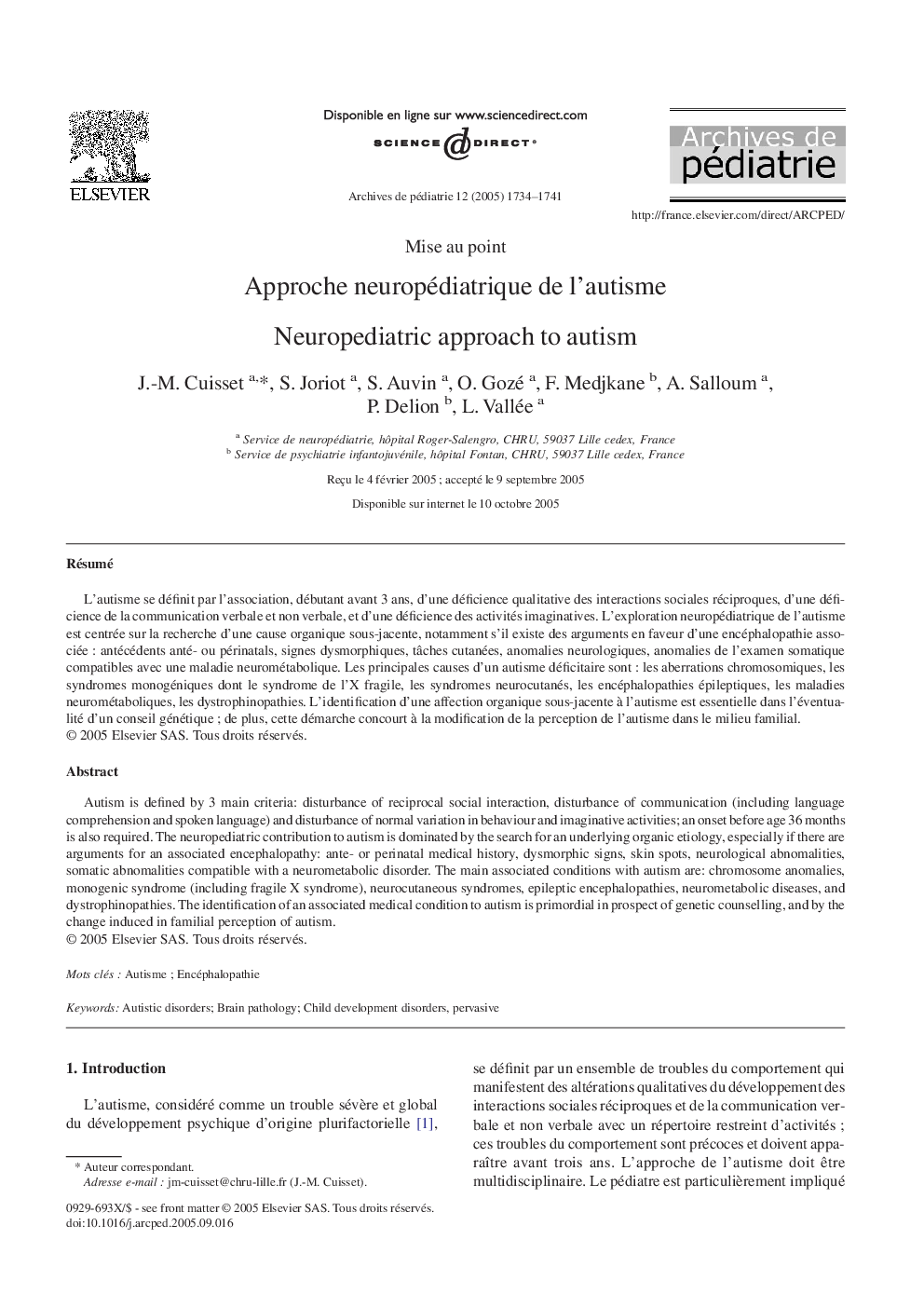| Article ID | Journal | Published Year | Pages | File Type |
|---|---|---|---|---|
| 9369757 | Archives de Pédiatrie | 2005 | 8 Pages |
Abstract
Autism is defined by 3 main criteria: disturbance of reciprocal social interaction, disturbance of communication (including language comprehension and spoken language) and disturbance of normal variation in behaviour and imaginative activities; an onset before age 36Â months is also required. The neuropediatric contribution to autism is dominated by the search for an underlying organic etiology, especially if there are arguments for an associated encephalopathy: ante- or perinatal medical history, dysmorphic signs, skin spots, neurological abnomalities, somatic abnomalities compatible with a neurometabolic disorder. The main associated conditions with autism are: chromosome anomalies, monogenic syndrome (including fragile X syndrome), neurocutaneous syndromes, epileptic encephalopathies, neurometabolic diseases, and dystrophinopathies. The identification of an associated medical condition to autism is primordial in prospect of genetic counselling, and by the change induced in familial perception of autism.
Related Topics
Health Sciences
Medicine and Dentistry
Perinatology, Pediatrics and Child Health
Authors
J.-M. Cuisset, S. Joriot, S. Auvin, O. Gozé, F. Medjkane, A. Salloum, P. Delion, L. Vallée,
